Rigid plastic packaging: How to choose buckets and pails
January 29, 2014
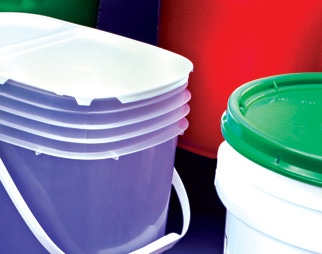
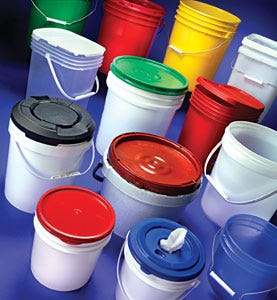
Drop in the bucket
From food products to paint, to laundry detergent, to joint compound, a vast array of products are packed, stacked, shipped, stored, displayed, and sold in rigid plastic containers. Because many variables affect the container's performance, selecting the best container for a particular use requires careful evaluation.While initial cost is always a consideration, application-matched performance should be the highest consideration. All too often the lowest first-cost solution turns into a much higher total-cost-of-use solution, after all additional expenses are taken into account.
Key questions save time, money
The well-informed buyer will know what questions to ask and what specifications to insist on before choosing the supplier of the company's rigid plastic containers. Here is a sampling of such questions:
Does the supplier offer performance testing?
Before placing an order for new containers, be sure samples have been tested to the conditions they will likely experience in actual service—with your company's product inside. This means testing for compression, crack resistance, cover strength, temperature tolerances and other important application criteria.
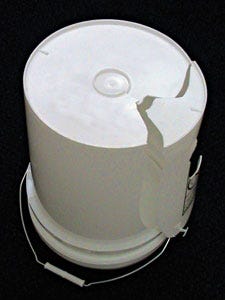
Drop in the bucket
A good supplier will have a wide range of containers to choose from as well as the ability to conduct in-house testing and even assist you if you prefer to carry out tests at your facility.Does the supplier have the ability and inclination to blend different plastics for specific applications?
Different resins provide different performance attributes that affect filling, stacking, shipping, temperature resistance and storage. The supplier should have the ability to target performance by selecting the right resin or creating a new blend (not just layers) of resins to optimize the performance and handling of the container in the real world. Obviously, the broader the range of resins the supplier has to choose from, the more options its technicians will have in formulating a plastic that suits your application requirements.
Does the supplier have the expertise to find the best solution to fit your needs?
Experience is the best teacher, so proven performance is a must. When you're spending thousands of dollars on containers, make sure you are dealing with a company that is big enough to handle your requirements by offering a wide variety of “off-the-shelf” solutions; modified off-the-shelf solutions or complete, newly designed solutions. Suppliers with modern, efficient molding technologies, technicians who know how to use the equipment, and lean manufacturing processes are more apt to produce reliable, economical containers.
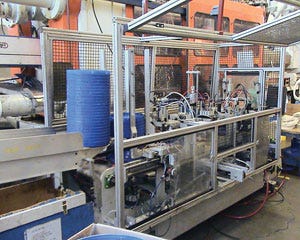
Drop in the bucket
Does the supplier have plastic-molding experts to meet your design requirements?This question is critical. The supplier should be able to work closely with its customers and understand the performance and handling requirements so it can recommend the best container for your application. The final formula and design should take everything into account, from the characteristics of the product to be contained to the preferred size and shape of the container, to the conditions under which the containers will be filled, to how high they will be stacked for shipping and storage, to how the containers might be displayed in stores (if applicable), to the desired lid, and so on.
Ideally, this should even extend to marketing advice. The best suppliers can recommend and produce a variety of container shapes and esthetics.
Can the supplier recommend molding options that result in containers that will perform best for your particular application?
Container weight and stackability are issues in all industries. A container designed for easy handling, excellent stacking strength, and close “nesting” maximizes the number of units per pallet or truckload. This, in turn, allows fewer shipments, lower shipping costs, less product handling, and greater overall efficiency.
Container shelf life is another factor, especially important when the product inside requires excellent environmental stress cracking resistance (ESCR) properties, such as paint, janitorial or construction products, or specialty chemicals. For extra protection against leaks, special gaskets should be chosen to allow for compression during storage.
A container's lid should fit snugly and hold up under stacking for the convenience of the end user, but many more lid and handle attributes should be considered. The supplier should offer a variety of lid designs to accommodate any and all customer needs, including child-resistant lids, senior-friendly lids, tear-strip lids, tamper-evident lids, lids for dispensing wipes, etc. For most applications, the container should be easy to open and lids should also create a tight reseal after opening. A spout should be an option.
As for handles, they are not just for looks. A container's handle should be ergonomic—it shouldn't break in two, pull away from the container, or cut into the carrier's hand. As an alternative to handles, some suppliers offer recessed finger grips built into the wall of the pail.
Is the supplier environmentally responsible?
The best suppliers have the capability to incorporate post-consumer recycled resin into their containers while meeting all of the customer's performance requirements.
Suppliers dedicated to developing rigid packaging solutions with as little environmental impact as possible are partners in Operation Clean Sweep, a joint initiative of the American Chemistry Council and the Society of the Plastics Industry to prevent the release of plastic resin pellets into the environment. Pledged to strive toward zero pellet loss through improved worksite procedures, partner companies provide employee training in responsible containment, cleanup, and disposal methods.
Is the supplier able to meet all container-related regulations, rules, and guidelines that pertain?
There are an array of rules for non-food products, such as the United Nations requirements for containers holding hazardous materials and the Coalition of Northeastern Governors (CONEG) standards that many states have adopted for the reduction of heavy metals in packaging.
Food containers also require special attention. The supplier should have the ability to produce containers that comply with all pertinent rules and regulations, including U.S. Food and Drug Administration regulations.
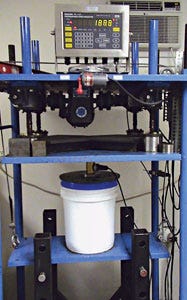
Drop in the bucket
Does the supplier have quality-control systems in place? How is its service/response record?To ensure consistency, the supplier should have both manual and mechanical statistical process control protocols or a similar quality- control/assurance system, ISO, etc. It is not enough for every container in a batch to be identical. The next batch, and the next, and every batch you order should be the same. If issues do arise, how will the supplier react? Does the company have a record for responsible customer service, including site visits when necessary and a willingness to work out complaints in a timely fashion?
Does the supplier have graphics application capabilities?
Ideally, the supplier should be willing and able to help you choose the decorating process that best enhances your container's visual appeal. The best container suppliers offer at least these four decorating/labeling options: offset printing, silk-screen printing, pressure-sensitive labels, and the newer heat-transfer printing that provides photo-quality graphics and a bar-code scan rate of 100 percent.
Are the supplier's supply chains reliable?
It's important to find a manufacturer that has good supply chains so as not to run out of a key ingredient during production. In fact, the company should have multiple vendors for each of its raw materials, in case one vendor can't make its deliveries. The container manufacturer should have multiple plants. The molds and protocols in each plant should match to provide backup capacity in case a plant has to shut down due to a natural disaster.
Does the supplier have a record for timely and economical deliveries to your region?
What is the required lead time for deliveries? Check the locations of the supplier's plants. Once the containers are produced, is the supplier willing to maintain a floor stock of finished containers for you, for just-in-time deliveries? Can the company deliver quickly, and are the plant locations appropriately suited to make deliveries economically?
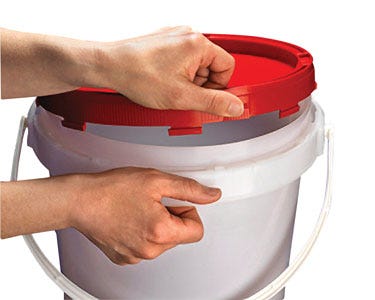
Drop in the bucket
The right fit

Drop in the bucket
Summing up, the performance of a molded plastic container is determined by the supplier's capabilities, including resin formulation, molding techniques, experienced employees, machine settings, quality control, container testing, and, most of all, the supplier's willingness to listen to the customer's needs. In the quest for a truly economical and reliable solution, don't pay for more than you need—but don't settle for less than you need either.
You May Also Like


